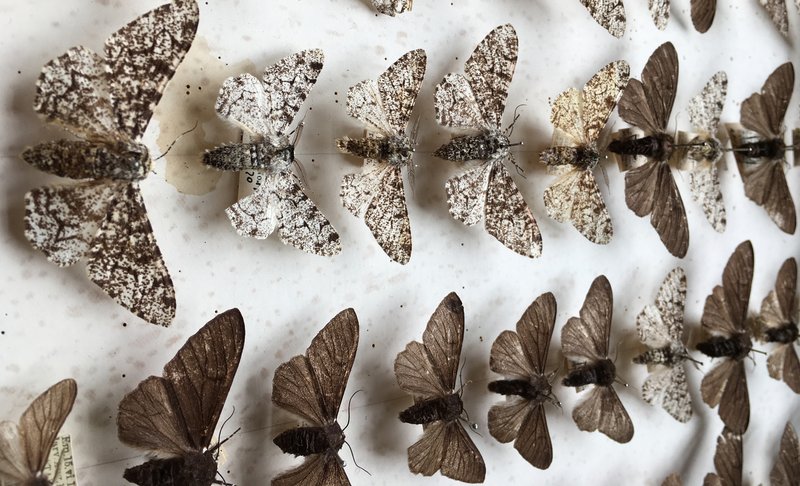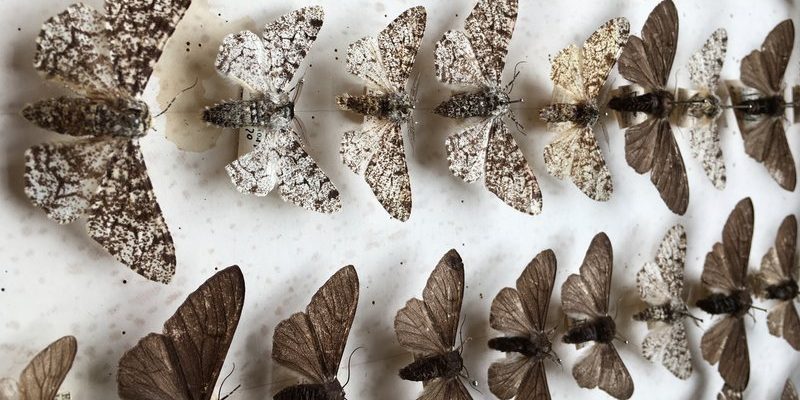
The world of moths is like a rich tapestry, woven together with threads of evolution, adaptation, and survival. They’ve been around for so long, you could say they were the original nightlife lovers, flitting around long before humans ever took our first steps. Let’s explore how moths have evolved and thrived through the ages, adapting to their environments in ways that are both surprising and endearing.
Origins of Moths: A Journey Through Time
Moths belong to the order Lepidoptera, which includes both moths and butterflies. The story of moths begins in the Triassic period, over 200 million years ago. Early moths were small, nocturnal creatures that likely fed on the leaves of ancient ferns and other primitive plants. Imagine a dimly-lit world filled with towering cycads, where these tiny moths danced from leaf to leaf, seeking out food and dodging the hungry jaws of early predators.
As time rolled on, these insects began to diversify. In fact, the earliest fossil evidence of moths dates back to about 190 million years ago. Fossils like these give us a snapshot of how early moths looked and lived, even showcasing tiny details like wing patterns. Isn’t it incredible that we can see these ancient creatures and imagine their lives?
Over millions of years, moths adapted to various environments, developing unique features to survive. They evolved into thousands of species, each with specific traits that helped them thrive in different climates and conditions. For example, moths in tropical regions often have large, colorful wings, while those in arid environments may have lighter, more muted colors. The diversity among moths is a testament to their ability to adapt and evolve.
Moth Anatomy: Wings, Senses, and Survival
Now, let’s take a closer look at what makes moths so unique. Moths have fascinating anatomy that helps them navigate their world. One of their most notable features is their wings. Moth wings come in a variety of shapes and sizes, but they all serve essential purposes. From helping them fly to providing camouflage from predators, these wings are remarkable.
Moths have scales on their wings that create the beautiful patterns we see. These scales can reflect light in stunning ways, helping moths blend into their surroundings or attract mates. You might be wondering how that works. Well, the scales can also help with temperature regulation, which is crucial for these cold-blooded insects.
Another fascinating aspect of moth anatomy is their strong sense of smell. Moths have antennae that are finely tuned to detect pheromones from potential mates. Some species can even pinpoint a mate from several miles away! It’s like they have their own GPS system, guiding them through the night to find love. This remarkable sense of smell isn’t just for romance; it’s also vital for locating food sources and avoiding danger.
The Role of Moths in Ecosystems
You might not realize it, but moths play a significant role in our ecosystems. They’re pollinators, much like bees and butterflies. While many people think of bees when it comes to pollination, moths also help plants reproduce by transferring pollen as they feed on nectar at night. Imagine a moonlit garden filled with moths flitting from flower to flower, ensuring plants can thrive and produce fruits and seeds.
Moths are also an essential part of the food web. Birds, bats, and other animals rely on moths as a food source. By being part of this chain, moths contribute to the overall health of ecosystems. They help control plant populations and serve as a food source for many animals, creating a balanced environment. It’s a beautiful example of how interconnected all life forms are.
However, moth populations are facing challenges today. Habitat loss, climate change, and pesticide use are impacting their numbers. Protecting moths is vital not only for their survival but also for the overall health of our ecosystems. We can all do our part by creating moth-friendly habitats in our gardens and reducing pesticide usage.
Moths in Culture: Myths and Legends
Moths have also carved out a space in human culture and folklore. Throughout history, various cultures have assigned different meanings and symbolism to moths. For example, in Native American traditions, moths are often seen as symbols of transformation and change, much like butterflies. This is because both insects undergo a metamorphosis during their life cycle.
In other cultures, moths may be viewed with a bit more intrigue or even fear. Some superstitions suggest that a moth sighting could be an omen, a messenger from the spirit world. This notion speaks to how closely humans have observed and interpreted the behavior of these creatures over the years.
You might be surprised to learn that even in literature and art, moths have made their mark. Think of the famous story “The Moth and the Star,” where a moth’s desire to reach a light serves as a metaphor for aspiration and risk. This gives us insight into how deeply intertwined moths are with our imagination and experiences.
The Impact of Moths on Science and Research
Researchers and scientists have also taken an interest in moths for various reasons. Their unique biological properties, such as their incredible camouflage and their ability to find food in the dark, have led to many studies. For example, scientists study moths to understand how they navigate using the moonlight and how they evade predators.
Another exciting area of research involves biomimicry. Scientists are exploring moths’ wing structures to design better materials that mimic their lightweight yet strong wings. This could lead to advancements in aerodynamics and even new technologies! Isn’t it fascinating how looking at something as simple as a moth can inspire innovation?
Additionally, moths can serve as bioindicators. Since they’re sensitive to environmental changes, monitoring moth populations can give us valuable insights into the health of ecosystems. If moth numbers decline, it might signal that something is off in the environment, prompting us to investigate.
Conservation Efforts: Protecting Moths for the Future
Given the challenges that moths face today, conservation efforts are more important than ever. Various organizations and enthusiasts work to raise awareness about moths and their ecological importance. They aim to educate the public on how to create habitats that support moth populations and promote biodiversity.
One way to help is by planting native plants in your garden. These plants provide food and shelter for moths and other beneficial insects. You can also reduce light pollution, which disrupts moth behavior and navigation. By turning off unnecessary lights at night, you can help create a friendlier environment for these nocturnal creatures.
You might even consider setting up a moth trap in your backyard. This simple device attracts moths, allowing you to observe and appreciate their beauty while contributing to citizen science initiatives. By participating, you can help researchers gather valuable data on local moth populations.
Moths may not always capture the same attention as butterflies, but their story is rich and compelling. From their ancient origins and essential roles in ecosystems to their cultural significance and ties to human life, moths are more than just a nighttime flutter. They’re resilient creatures that have adapted and thrived alongside us for millions of years.
By understanding the evolution and history of moths, we can better appreciate their contributions to our world and take action to protect them. Every small effort counts and contributes to maintaining the delicate balance of life on this planet. So, the next time you see a moth, take a moment to reflect on its remarkable journey through time and its role in our lives. There’s a whole world of wonder in those delicate wings!

